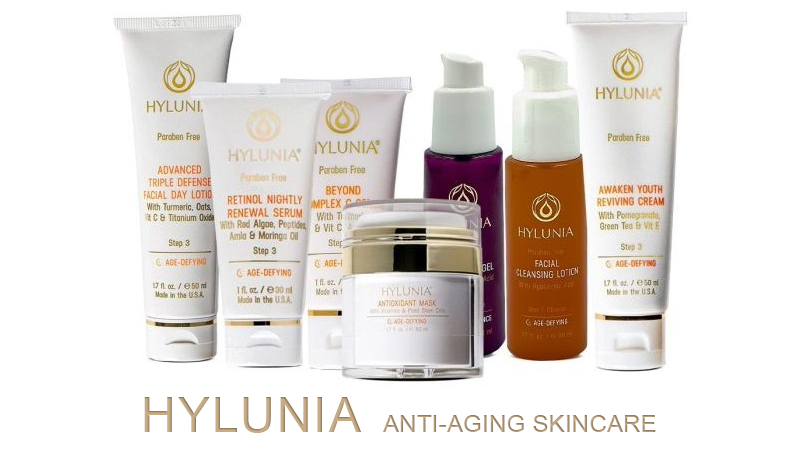
As we get older, our skin starts to change in ways that can sometimes feel like nature’s way of reminding us of the passage of time. A common sign of aging skin is a loss of elasticity, which means skin begins to sag, wrinkle, and feel less firm than it once did. But what exactly is happening beneath the surface that causes these changes? And, more importantly, what can we do about it? Thankfully, there are ways to address these changes naturally, helping our skin bounce back with a little extra resilience.
Contents
- Understanding Skin Elasticity: The Key to Youthful Skin
- Common Causes of Reduced Skin Elasticity
- Natural Methods to Combat Loss of Skin Elasticity
- Skincare Ingredients That Help Improve Elasticity
- Building an Elasticity-Boosting Skincare Routine
- Regular Facial Massage for Increased Blood Flow
- Exercise: Keeping Skin Elastic from Head to Toe
Understanding Skin Elasticity: The Key to Youthful Skin
Skin elasticity refers to the skin’s ability to stretch and then return to its original shape. Think of it like a rubber band: when it’s new, it snaps back easily, but after years of use, it starts to lose that spring. The same process happens with our skin due to a combination of factors including collagen breakdown, loss of hydration, and lifestyle impacts. But how does elasticity loss actually happen, and why does it seem to accelerate as we age?
The Role of Collagen and Elastin
Two of the biggest players in skin elasticity are collagen and elastin. Collagen, a protein found in our skin, provides structure and firmness. Elastin, another protein, allows the skin to stretch and move, giving it that “snap-back” quality. However, as we age, our body naturally produces less collagen and elastin. Starting in our 20s, collagen production decreases by about 1% per year, which, over time, leads to thinner skin that’s more prone to wrinkles and sagging.
But it’s not just age that’s working against collagen and elastin—factors like sun exposure, pollution, and even facial expressions can break down these proteins. This gradual reduction and weakening of collagen and elastin fibers leads to that visible loss of skin elasticity over time.
The Impact of Hydration Levels
Hydration is another crucial element for maintaining skin’s elasticity. When skin cells are well-hydrated, they’re plump and firm, giving skin a more youthful appearance. As we age, our skin naturally produces less oil, which means it loses moisture more easily. A lack of hydration causes the skin to lose volume and can make wrinkles appear more pronounced. Think of it like a grape turning into a raisin—hydration can make all the difference in how full and vibrant our skin looks.
Common Causes of Reduced Skin Elasticity
Understanding the root causes of elasticity loss can help us address these issues effectively. While some factors are within our control, others are simply part of the natural aging process. Let’s take a look at the primary culprits behind reduced skin elasticity.
Sun Damage: The Enemy of Elastic Skin
Sun exposure is one of the leading causes of skin aging and elasticity loss. Ultraviolet (UV) rays penetrate the skin and damage the DNA within cells, leading to accelerated collagen breakdown and a weakened skin structure. Over time, repeated sun exposure without protection causes wrinkles, sagging, and even changes in skin texture.
To protect your skin from UV damage, a good habit is to use broad-spectrum sunscreen daily, even on cloudy days. Sun protection is the best way to preserve your skin’s elasticity over the years.
Environmental Toxins and Lifestyle Choices
Pollution, smoking, and even dietary choices can all play a role in how elastic or resilient your skin is. Pollution introduces free radicals into the skin, which are unstable molecules that damage cells, accelerate aging, and decrease skin elasticity. Smoking, in particular, reduces blood flow to the skin, depriving it of oxygen and essential nutrients, which impacts both collagen production and skin repair.
- Smoking: Reduces blood flow and damages collagen fibers, leading to skin sagging.
- Diet: Low-nutrient diets lacking antioxidants can make the skin more vulnerable to free radical damage.
- Stress: Chronic stress triggers hormonal changes that can speed up the aging process, impacting elasticity.
Hormonal Changes
As we age, hormonal changes, especially in women during menopause, can have a noticeable effect on the skin’s elasticity. Estrogen levels, which help maintain skin thickness and hydration, begin to decline, resulting in a decrease in collagen production. This hormonal shift often causes skin to thin and sag, making the loss of elasticity more pronounced.
Natural Methods to Combat Loss of Skin Elasticity
The good news is that there are natural ways to help preserve and even improve skin elasticity. While no remedy can completely reverse aging, a combination of lifestyle changes and natural skincare can help your skin look and feel more youthful.
Boost Collagen with the Right Diet
Your diet has a powerful influence on your skin’s elasticity. Consuming foods that are rich in vitamins C and E, along with amino acids, can support collagen production and repair.
- Vitamin C: Found in citrus fruits, bell peppers, and strawberries, vitamin C is essential for collagen synthesis.
- Vitamin E: Nuts, seeds, and leafy greens are high in vitamin E, an antioxidant that helps protect the skin from damage.
- Amino Acids: Found in proteins like lean meats, eggs, and legumes, amino acids are the building blocks of collagen.
Incorporating these foods into your diet can give your skin the nutrients it needs to maintain elasticity and repair damaged collagen.
Hydrate from the Inside Out
Staying hydrated is key to maintaining plump, elastic skin. Aim to drink enough water daily to keep your skin cells hydrated. Alongside water, foods with high water content—like cucumbers, watermelon, and tomatoes—can support hydration from the inside out.
Skincare Ingredients That Help Improve Elasticity
Choosing the right skincare ingredients can also make a significant difference in how firm and elastic your skin appears. Here are some ingredients to look for:
Retinol: The Gold Standard for Skin Renewal
Retinol, a derivative of vitamin A, is well-known for its ability to promote cell turnover and boost collagen production. This ingredient can reduce the appearance of fine lines and improve skin texture, making it an excellent choice for maintaining elasticity. It’s best to start with a lower concentration if you’re new to retinol to avoid irritation.
Hyaluronic Acid: A Moisture Magnet
Hyaluronic acid doesn’t directly impact collagen, but it plays a huge role in maintaining hydration, which in turn supports elasticity. It works by attracting water to the skin, helping it look plump and reducing the appearance of fine lines. It’s a go-to ingredient for anyone looking to boost moisture levels in aging skin.
Antioxidants to Fight Free Radicals
Antioxidants, such as vitamin C, green tea extract, and niacinamide, help combat the damage from free radicals, which break down collagen and elastin. These ingredients are essential for protecting the skin and slowing the loss of elasticity over time.
Building an Elasticity-Boosting Skincare Routine
Creating a daily skincare routine with the right products can provide ongoing support for your skin’s elasticity. Here’s a simple routine to get you started:
Morning Routine
In the morning, focus on hydration and protection from the elements. Use a gentle cleanser, followed by a hydrating serum with hyaluronic acid. Finish with a moisturizer containing antioxidants and a broad-spectrum sunscreen to protect against UV damage.
Evening Routine
At night, focus on ingredients that aid in repair and regeneration. After cleansing, apply a retinol serum to promote collagen production, followed by a hydrating moisturizer. Consider using a gentle exfoliator once a week to remove dead skin cells and help your products absorb better.
Regular Facial Massage for Increased Blood Flow
Facial massage is a natural, hands-on way to support skin elasticity by increasing blood flow to the skin. Massaging your face for a few minutes each day can stimulate circulation, helping bring oxygen and nutrients to the surface. This practice may help improve skin tone and reduce the appearance of fine lines. You can use your fingertips or a facial roller, applying gentle upward motions. Just five minutes a day can make a difference in your skin’s firmness over time.
Exercise: Keeping Skin Elastic from Head to Toe
Exercise isn’t just good for your body—it’s also beneficial for your skin. Physical activity promotes better circulation and helps manage stress, both of which have a positive impact on skin health. The increased blood flow from exercise ensures your skin cells receive more oxygen and nutrients, supporting cell repair and elasticity. For an added benefit, facial exercises targeting specific areas prone to sagging, like the jawline and cheeks, can complement your regular workouts and keep your skin looking youthful.
There’s no way to stop time entirely, but by making a few changes in your lifestyle and skincare routine, you can keep your skin looking resilient and vibrant. Small, consistent efforts add up over time, helping your skin look its best at every stage of life.

